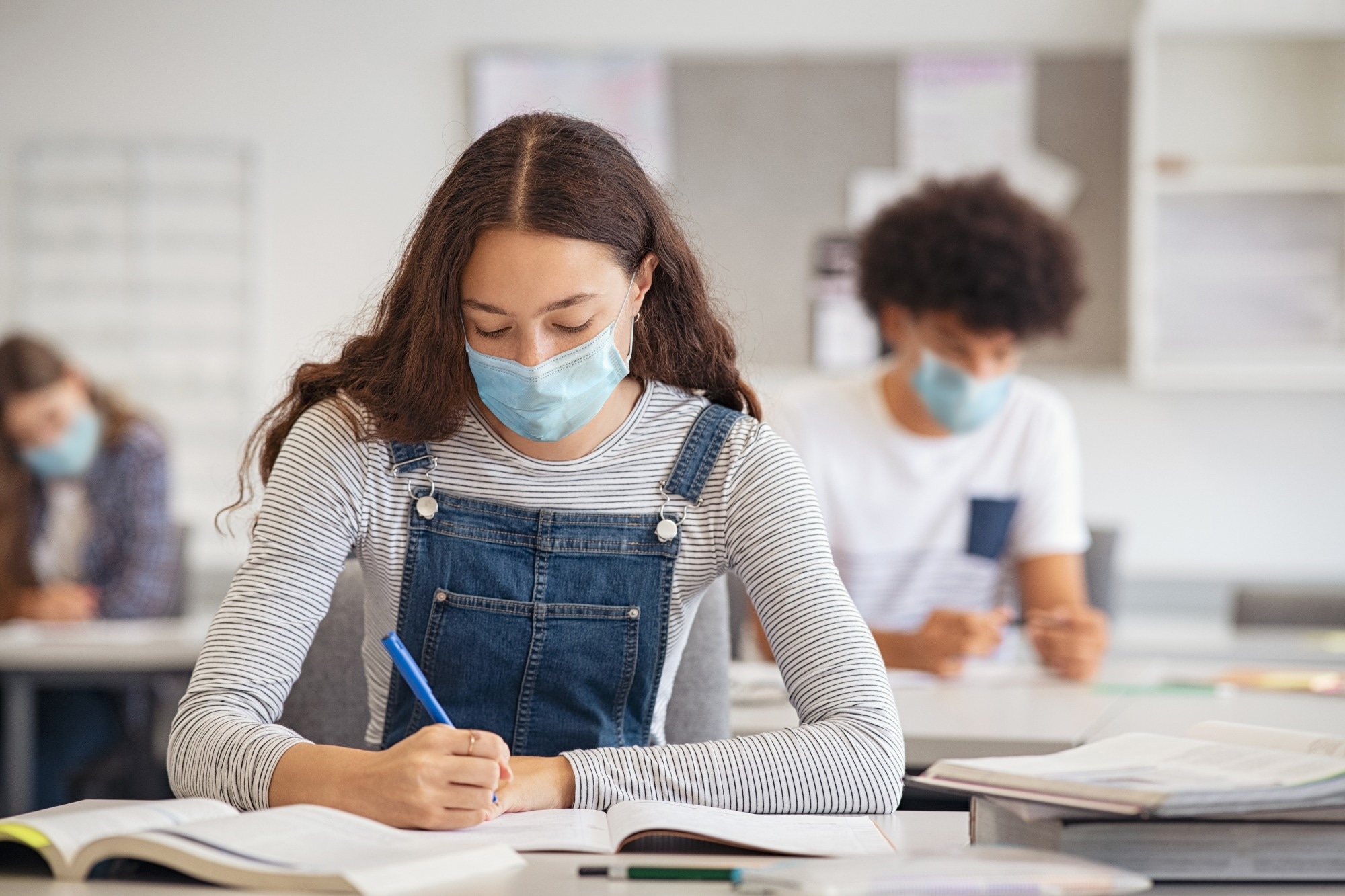In a recent study published in The Lancet Regional Health, researchers explored the well-being and health of non-hospitalized young individuals and children following severe acute respiratory syndrome coronavirus 2 (SARS-CoV-2) testing.
 Study: Natural course of health and well-being in non-hospitalised children and young people after testing for SARS-CoV-2: A prospective follow-up study over 12 months. Image Credit: Ground Picture/Shutterstock
Study: Natural course of health and well-being in non-hospitalised children and young people after testing for SARS-CoV-2: A prospective follow-up study over 12 months. Image Credit: Ground Picture/Shutterstock
Background
Compared to adults, SARS-CoV-2 infection in most children and young people (CYP) has been between asymptomatic and moderate. Nonetheless, as the cumulative infection rate in CYP rises, the prevalence of post-coronavirus disease 2019 (COVID-19) sequelae is becoming a growing concern. Long COVID or post-COVID-19 condition has shown a detrimental effect on some CYP; however, little is known regarding the frequency, distribution, or span of poor well-being and health in CYP following COVID-19.
About the study
In the present study, researchers reported the within-individual diversity in health and well-being six and 12 months following COVID-19 testing.
The CLoCk study is a cohort analysis of SARS-CoV-2-positive CYP aged between 11 and 17 years, paired by month of a positive diagnosis, age, gender, and geographic region to SARS-CoV-2-negative CYP utilizing the nationwide SARS-CoV-2 test dataset conducted by the United Kingdom Health Security Agency (UKHSA). This project aims to collect information for 24 months following a SARS-CoV-2 polymerase chain reaction (PCR) test performed from September 2020 to March 2021. More than 30,000 CYP were recruited for the trial. Based on the month of the test, the team gathered data at three, six, 12, and 24 months after the test for some persons; six, 12, and 24 months after the test for others; and 12 and 24 months post-test for the rest of the individuals.
The team presented data collected on the same CYP six and 12 months following PCR testing. The first contact involved completing an online health questionnaire by the CYPs during the PCR test. CYP answered follow-up questions at six and 12 months, which inquired about their well-being and health. The questionnaires were completed by the CYP; however, a caretaker could help younger CYP and individuals who had educational needs or disabilities.
The measures comprised demographic information and sections of the International Severe Acute Respiratory and Emerging Infection Consortium (ISARIC) Paediatric COVID-19 questionnaire. The team included 21 symptoms and corroborated tools for loneliness using the adapted three-item UCLA Loneliness Scale and mental well-being using the Strengths and Difficulties Questionnaire. At the same time, the quality of life and functioning was assessed using the EQ-5D-Y21 and Chalder Fatigue Scale.
Results
After a mean of 27.7 and 52.1 weeks, the follow-up questionnaires for six-month and 12 months were submitted, respectively. Almost 2,909 out of 6,407 SARS-COV-2 positive CYP and 2,177 out of 6,542 SARS-COV-2 negative CYP who responded at six months also responded at 12 months. Additionally, 10.9% of positive test subjects felt exhaustion, 4.4% experienced shortness of breath, 3.3% had a loss of taste or smell, 1.7% reported dizziness or lightheadedness, and 1.1% reported missing meals at all three-time points. Almost 16 symptoms impacted less than 1% of SARS-CoV-2-positive individuals at each of the three-time points, while 1.2% of those who tested negatively reported weariness. Less than 1% of SARS-CoV-2-negative individuals reported the remaining 20 symptoms. Thus, the range of symptom prevalence varied by SARS-CoV-2 PCR status.
Examining the within-individual variation in symptomatic profiles, the predominance of the 11 most prevalent symptoms at baseline decreased significantly over 12 months in the test-positive group. For CYP who experienced one of these symptoms for the first time at six months, there is a reduction in frequency by 12 months. Nevertheless, for two symptoms, namely shortness of breath and fatigue, the overall incidence in test-positives rose by six months and continued to increase further by 12 months.
The general prevalence of difficulties with self-care, mobility, and feelings of sadness or isolation was minimal at all the three-time points for both SARS-CoV-2-positive and -negative individuals. Similar patterns were observed for performing routine activities and experiencing pain, as were those for shortness of breath and exhaustion. However, there was a negligible difference between SARS-CoV-2 negative and positive individuals reporting these symptoms for the first time at 12 months regarding the prevalence of discomfort or difficulty doing routine tasks.
Conclusion
The study findings showed that among CYP, the incidence of adverse symptoms reported after a SARS-CoV-2 positive diagnosis decreased during the course of one year. Some SARS-CoV-2-positive and -negative persons experienced unfavorable symptoms for the first time at six and 12 months after diagnosis, such as fatigue, shortness of breath, and fatigue, indicating that these symptoms are likely due to multiple reasons.